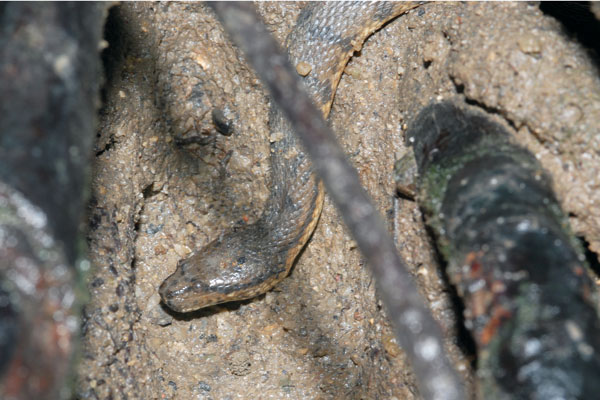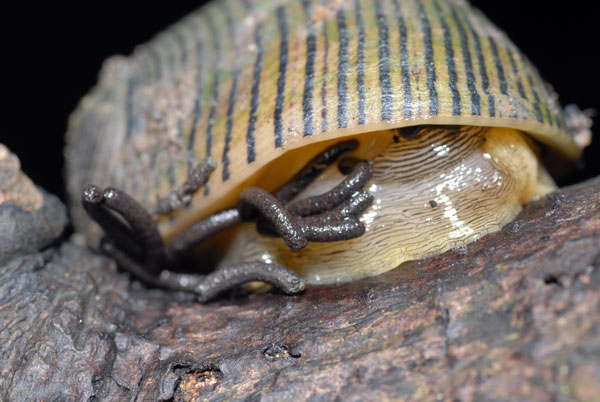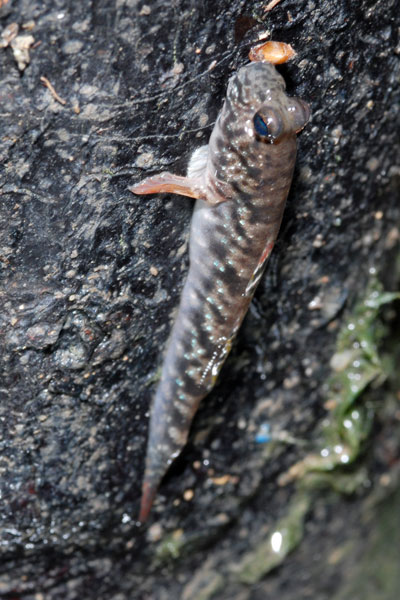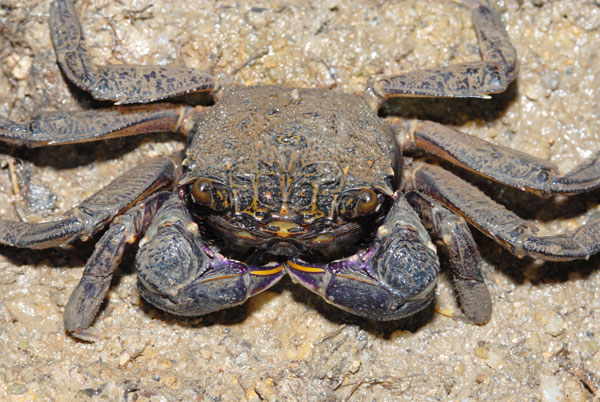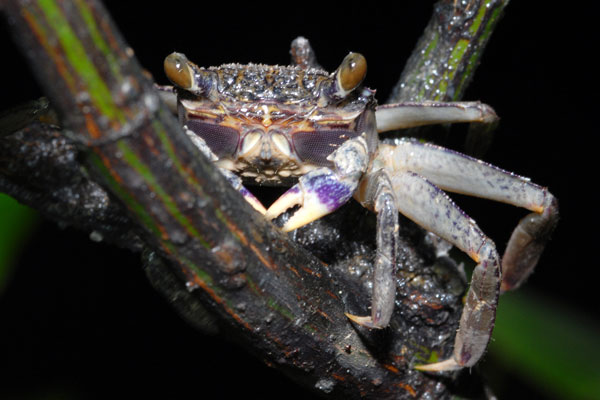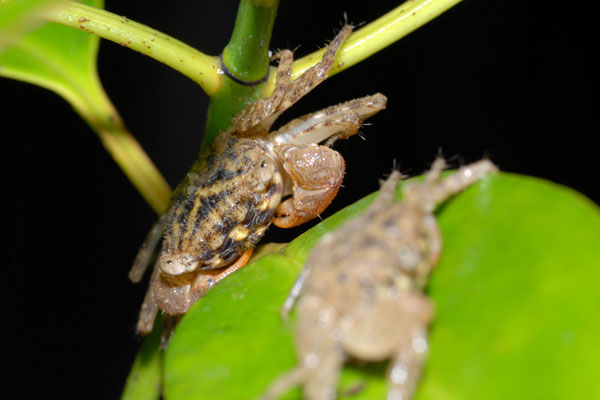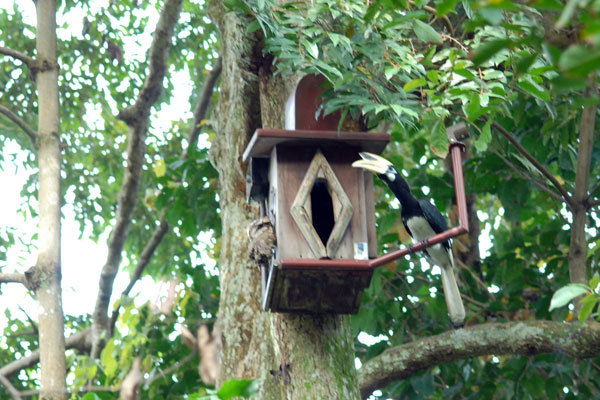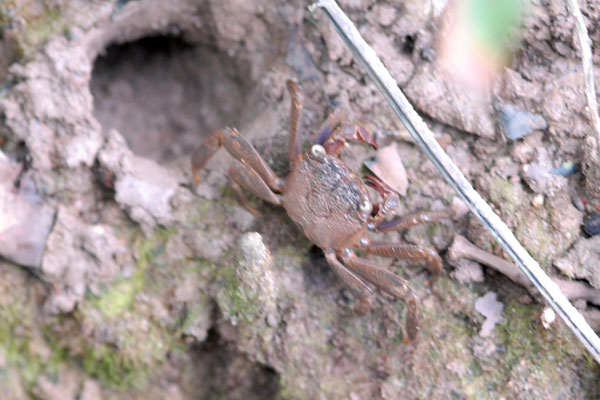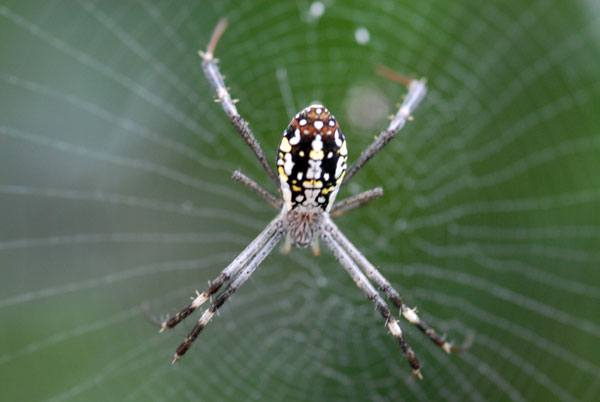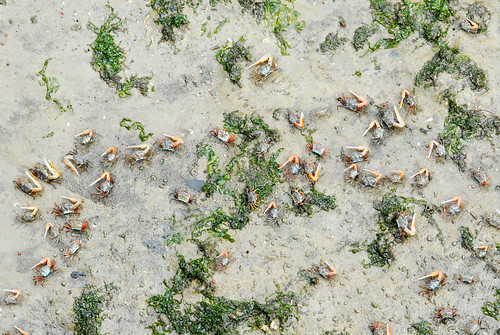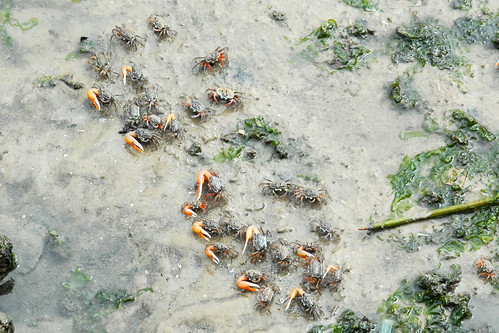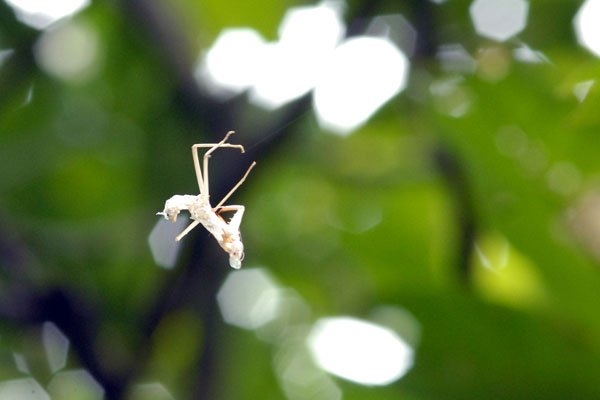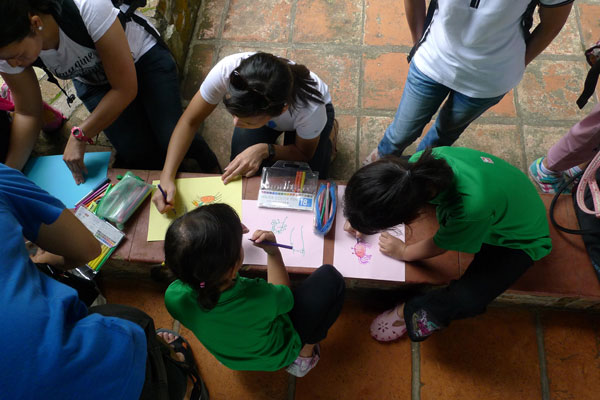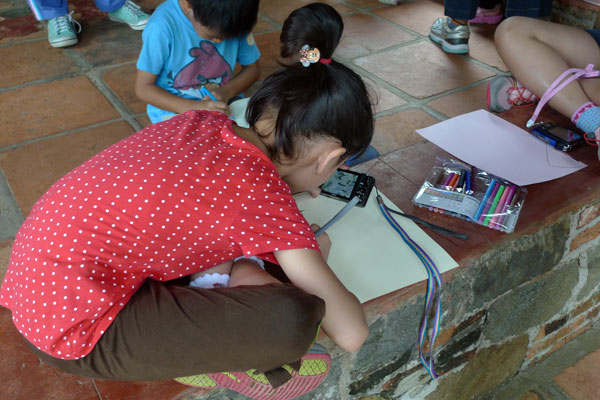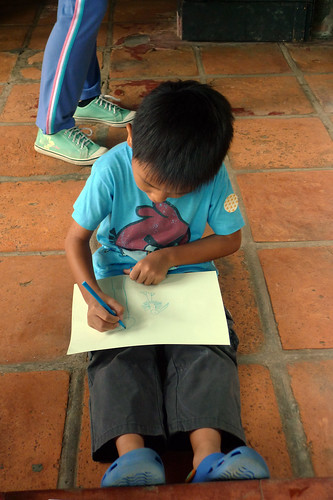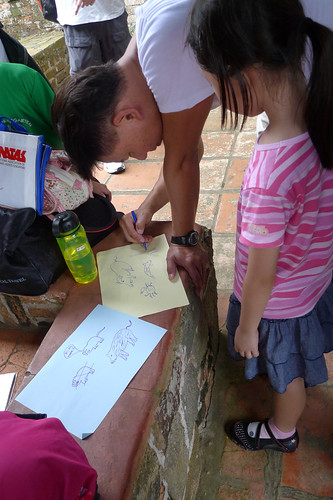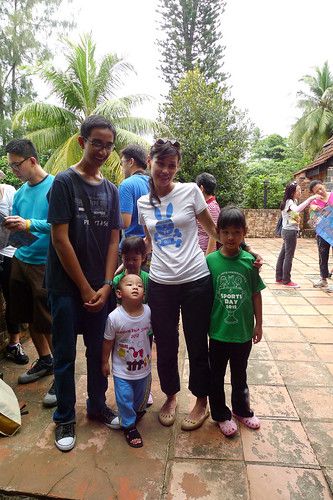For the last fieldtrip of the year, I decided I shall do away with intertidal shore and reef. Actually, it was not a planned fieldtrip. After reading about Ria's
recent visit to the Pasir Ris Park's mangrove at night, I wanted to visit it. Having done a few guided walk at this place with the Naked Hermit Crabs and visited the place myself a few times, I have not actually seen a mangrove at night.
So I spent the last two days of 2012 at the Pasir Ris Park magrove with my friend. Two days because we started late at night on 30th December and ened on 31st December early morning.
Night Time is great for close observation of animals. They hardly move and you are able to get real close to them.
As we entered the mangrove, I spotted a pipefish and a juvenile dog-faced water snake emerging from its hole in a small stream nearby.
 |
| Pipefish |
The mangrove housed many different types of spiders - big, small, adult, babies... etc.
I am very poor with spider identification, so I try to identify the spider species to my best ability.
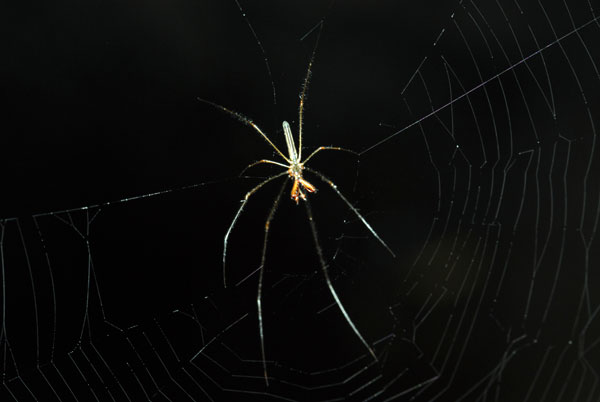 |
| Mangrove Big-Jawed Spider (Tetragnatha josephi)? |
 |
| Lynx spider (Family Oxyopidae) |
 |
| Singapore Fishing Spider (Thalassius sp.)? with egg sac. |
 |
| Unknown spider 1 |
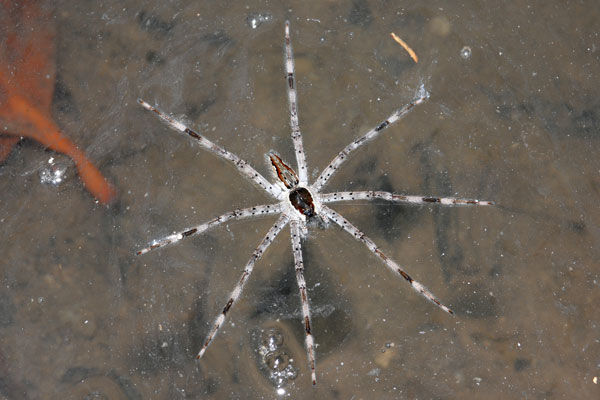 |
| Singapore Fishing Spider (Thalassius sp.) on water surface. |
 |
| Hatched baby spiders |
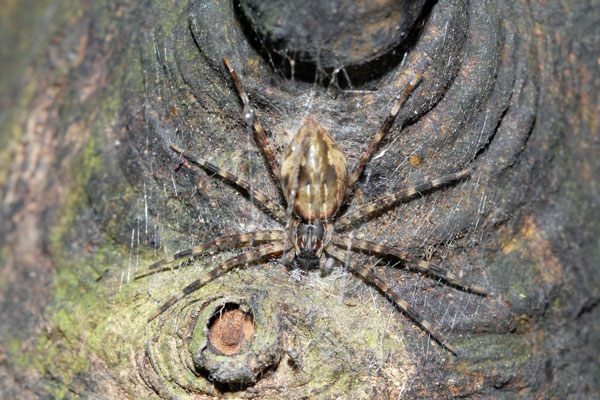 |
| Unknown spider 2 |
There are many snails and slugs creeping on tree trucks.
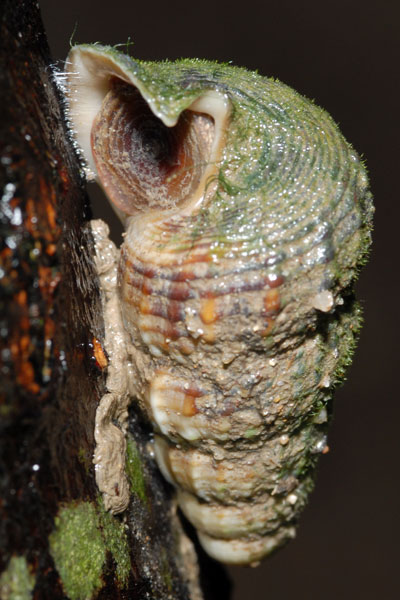 |
Red chut-chut snail (Cerithidea obtusa)
See how it "glues" itself onto the tree truck. |
At a particular spot where we explored, there was a large suspicious pile of calm shells. I suppose that humans have thrown them here?
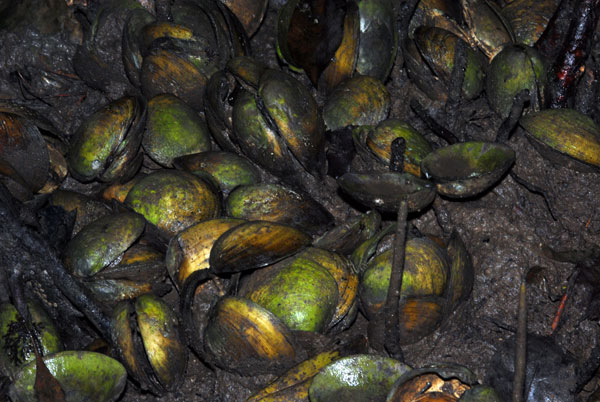 |
| Pile of clam shells. |
As the tide rises in the mangrove, more exciting things happens in the mangrove.
Oh.... what is this thick rubber like thing in the water?
It is a
snake eel (Family Ophichthidae)!
In fact we actually saw at least five of them in various sizes during this trip. Wow!
 |
| Snake eel hunting for food in a hole. |
 |
| Scavenging snake eel |
The rising tide and night time also allows us to have a closer look at mudskippers. They do stay high up on the tree trucks during high tide (as high as my eye level).
 |
| Mudskipper outside its burrow. |
 |
| A suction-like plate to help stay on the tree truck? |
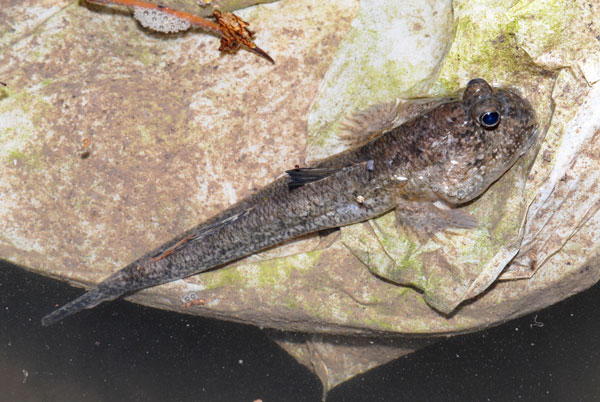 |
| Unknown type of mudskipper, quite large. |
How can we forget about the crabs in the mangrove?
Pasir Ris Park mangrove is one of the best locations to see large tree-climbing crabs (Family Sesarmidae). When the tides rises, the crabs climb trees to as high as eye level on the boardwalk.
Here are some of the crabs we saw:
 |
| Mama crab |
 |
| Eggs of mama crab |
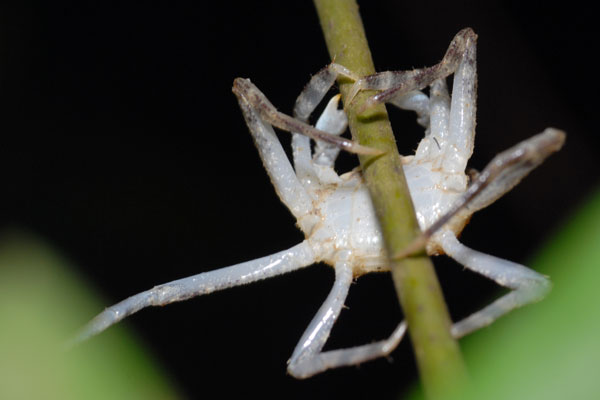 |
| Acrobatic crab |
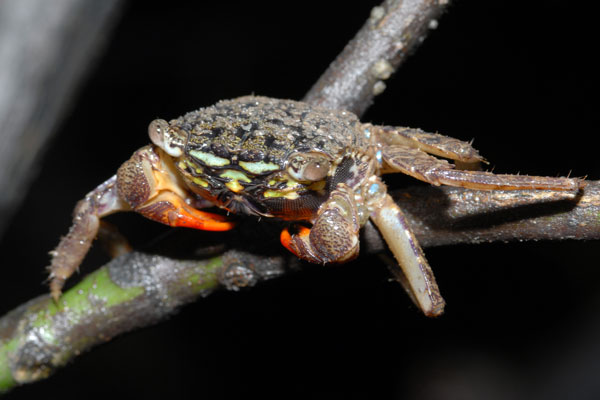 |
| Face-banded crab (green band?) |
 |
| Face-banded crab (blue band) |
 |
| I can't remember what crab this is. |
It was raining crabs in the mangroves as the tree-climbing crabs will drop into the water from the tree trucks or branches when they sense danger approaching them. We noticed that the crabs do not just simply release their grip and fall straight down. They actually do a backwards fall, probably to avoid hitting the base of the tree. Pretty clever.
The sound of crabs falling into water was quite amusing initially. However it gets rather irritating after a while as the crabs are falling into water everywhere. It sounds like endless random stones dropping into water, sometimes a few, sometimes many.
We also saw at least two pairs of mating horseshoe crabs but the knee deep water does not allow my camera to take a good photo of it. I found a red ear slider turtle swimming in the water at the back mangrove. It was rather hilarious. The red ear slider is an invasive species to Singapore's ecosystem and they are seen in our ecosystem because of human release.
It was a very animal quiet night in the mangrove. We did not come across any birds or larger snakes nor even hear their presence. What surprised me was that even in the wee hours at night and early morning, there were young adults "playing" on the boardwalk and other visitors taking a walk on the boardwalk.
What a fun and interesting way to end my fieldtrips for the year 2012.
There will be more fieldtrips in 2013!
You can check out what Ria Tan saw during her recent trip there here:
Strange snakey thing at Pasir Ris
